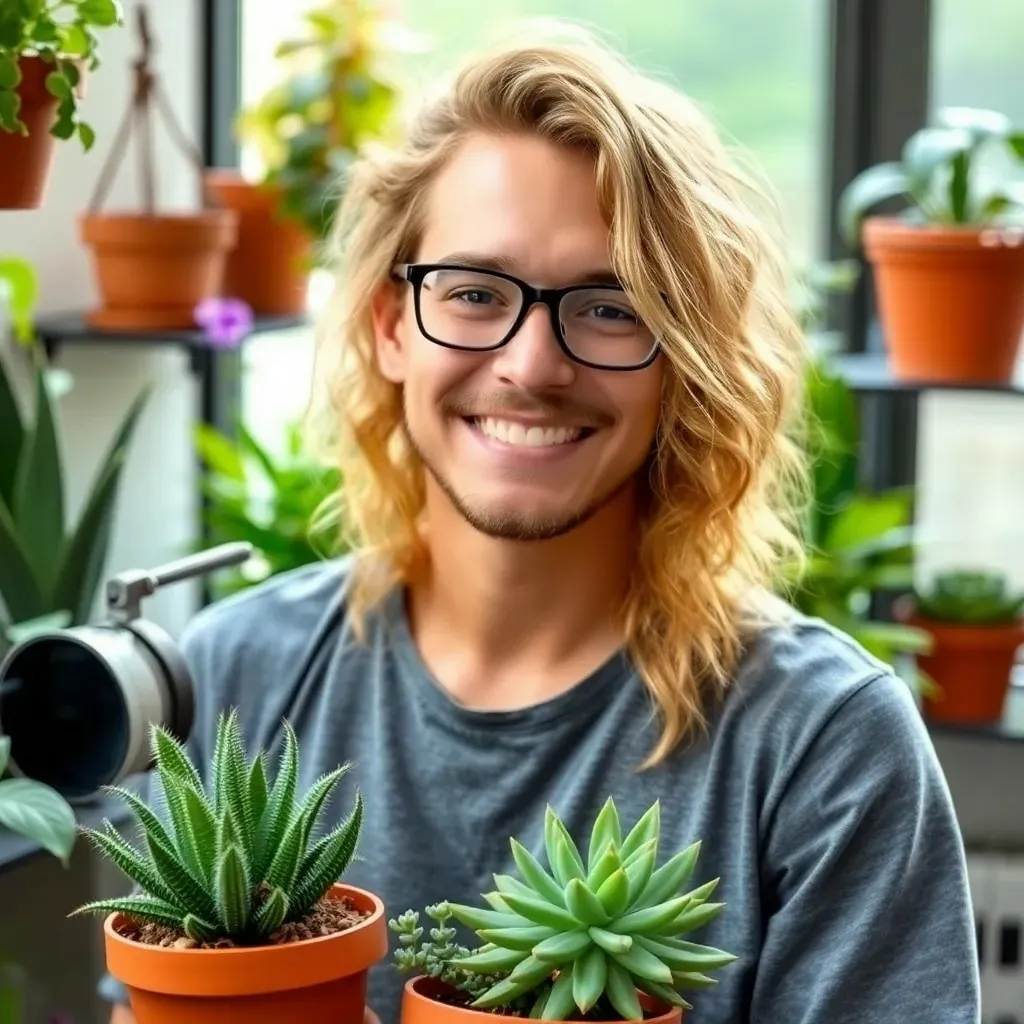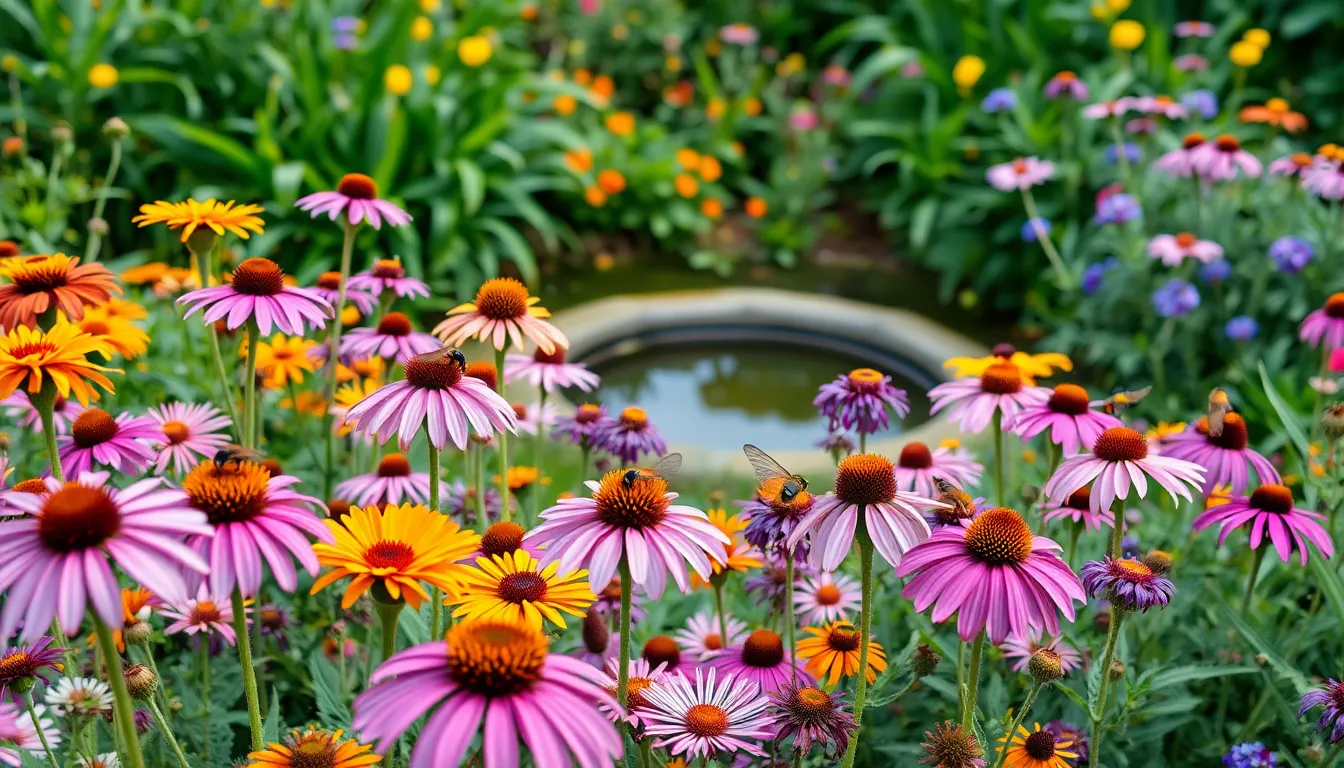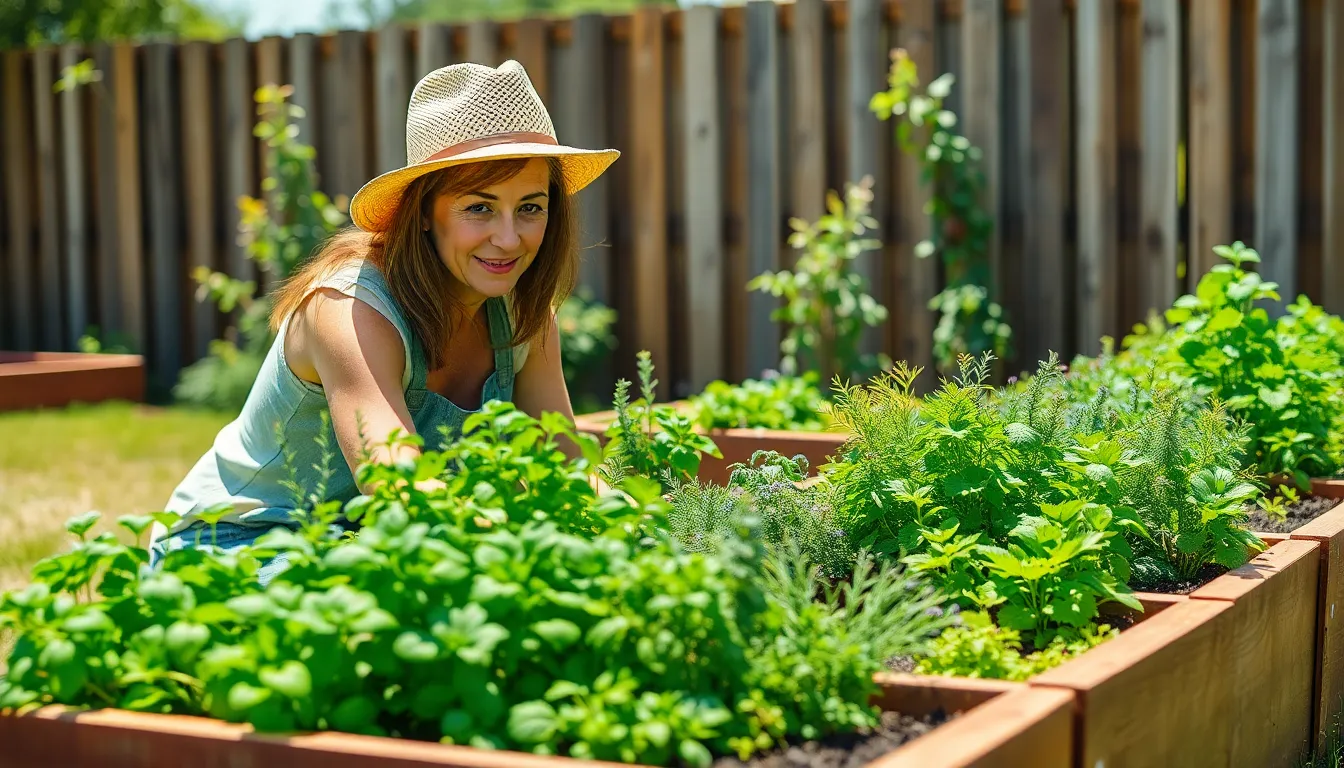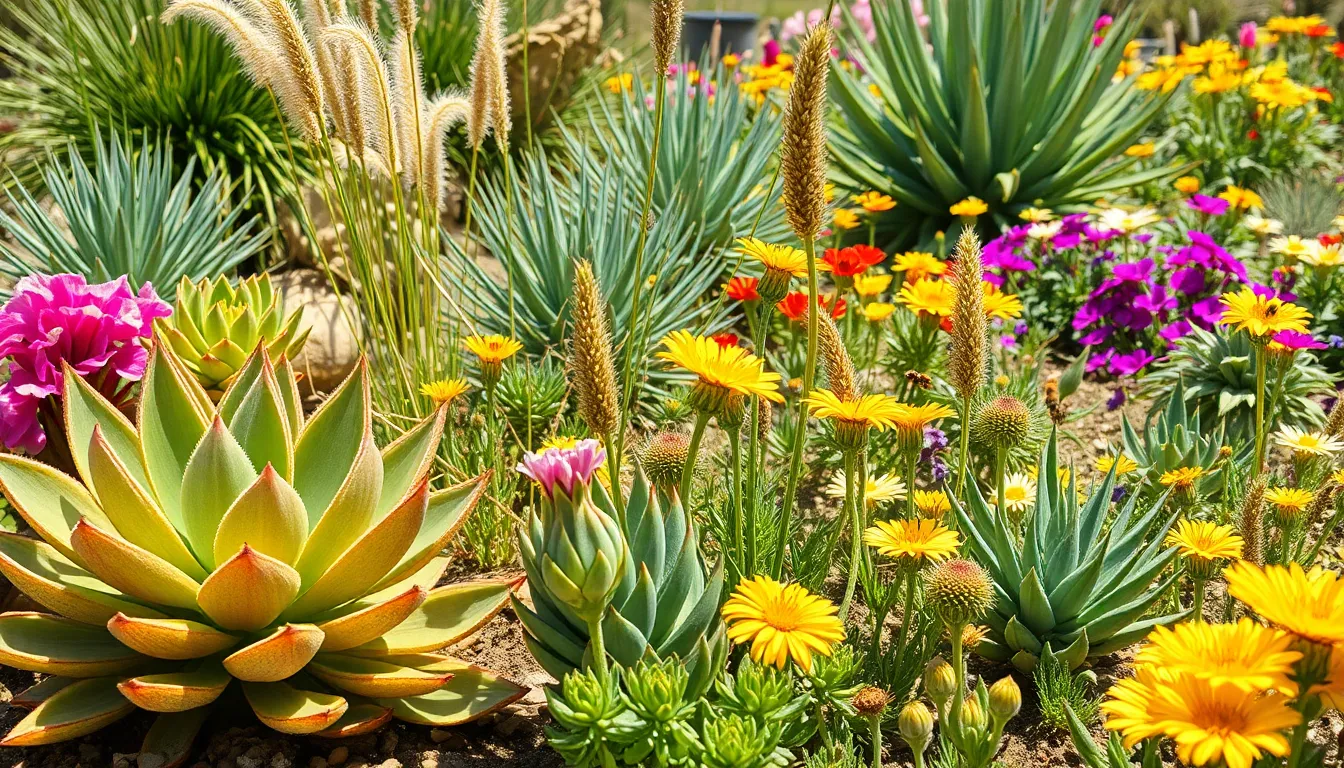In a world where biodiversity is crucial for a healthy ecosystem, attracting pollinators has become more important than ever. These tiny creatures, including bees, butterflies, and hummingbirds, play a vital role in the pollination of plants, which directly impacts food production and natural habitats. Without them, many of the fruits, vegetables, and flowers we cherish would struggle to thrive.
Creating a welcoming environment for pollinators not only supports their populations but also enhances gardens and landscapes. By incorporating specific plants, providing water sources, and minimizing chemical use, anyone can transform their outdoor space into a pollinator paradise. Understanding the needs of these beneficial insects and birds is the first step toward fostering a thriving ecosystem that benefits both nature and humans alike.
Table of Contents
ToggleUnderstanding Pollinators
Pollinators play a vital role in ecosystems, affecting biodiversity and food production. Various species contribute to the pollination process, ensuring healthy plants and habitats.
Types of Pollinators
- Bees: Bees account for roughly 75% of all pollination. Honeybees and bumblebees are particularly effective due to their foraging behaviors.
- Butterflies: Butterflies, such as monarchs, are attracted to bright flowers. They aid in pollination while seeking nectar.
- Hummingbirds: Hummingbirds prefer red and tubular flowers. Their rapid movements enhance the transfer of pollen.
- Bats: Bats serve as essential pollinators for specific plants, particularly in tropical regions. They assist in night-blooming flower pollination.
- Other Insects: Various insects, including moths, flies, and beetles, contribute to pollination. Each species has distinct preferences for flowers.
Importance of Pollinators
- Ecosystem Balance: Pollinators support plant reproduction. This process sustains food webs and maintains natural balance.
- Food Production: Approximately 1/3 of the global food supply relies on pollinators. Fruits, vegetables, and nuts depend heavily on their activity.
- Economic Value: Pollinators contribute billions in economic value to agriculture. Their work enhances crop yields and quality.
- Biodiversity: The presence of pollinators leads to increased plant diversity. This diversity supports wildlife habitats and ecosystem resilience.
Best Practices for Attracting Pollinators
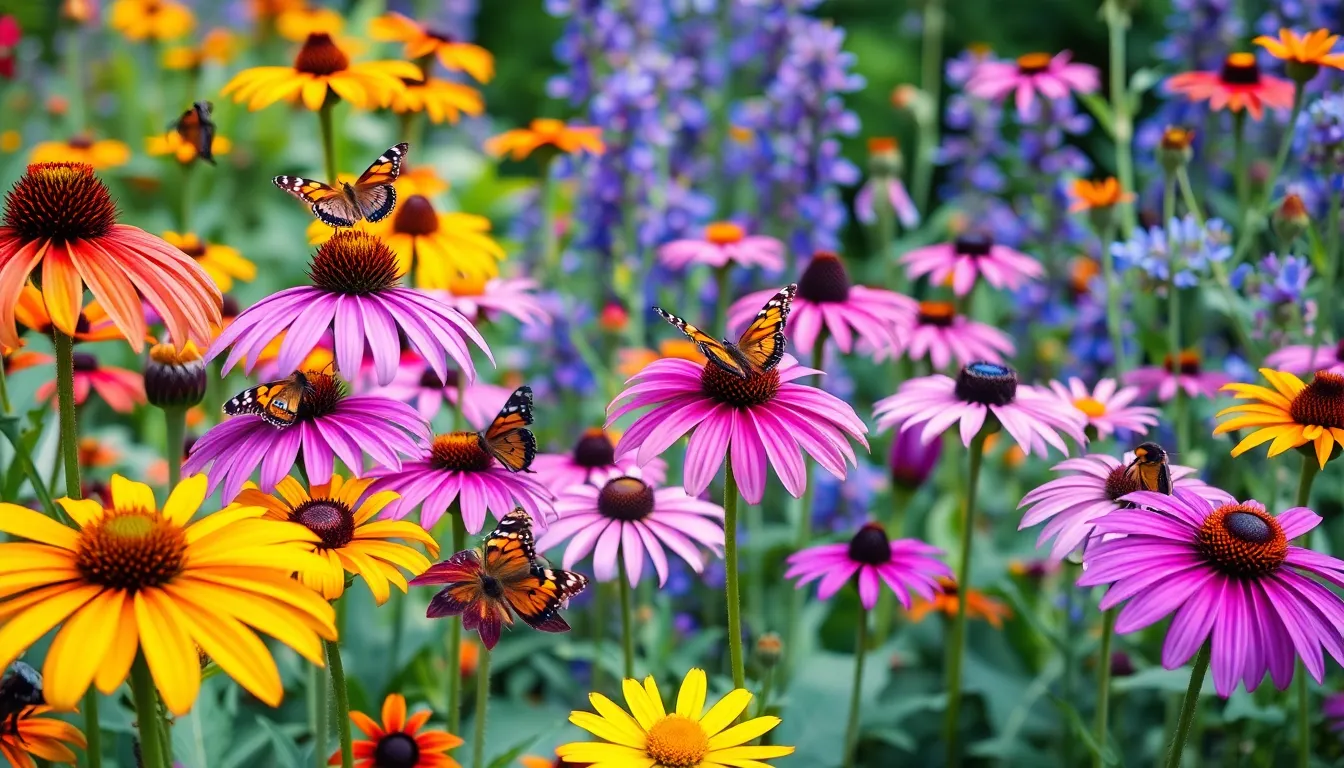
Attracting pollinators requires careful planning and consideration of their specific needs. Implementing the following strategies can create a hospitable environment that encourages these vital species to thrive.
Native Plants to Consider
Selecting native plants enhances the garden’s appeal to local pollinators. Native species are well adapted to the local climate and soil, providing essential food and shelter. Consider the following native plants:
- Coneflower (Echinacea purpurea): Attracts bees and butterflies with its vibrant blooms.
- Milkweed (Asclepias spp.): Essential for monarch butterflies, offering food for larvae.
- Black-eyed Susan (Rudbeckia hirta): Provides nectar for various bee species and butterflies.
- Goldenrod (Solidago spp.): Offers pollen and nectar late in the season, benefiting late-flying insects.
Providing Food Sources
- Nectar-rich flowers: Select plants that produce large amounts of nectar to attract hummingbirds and bees.
- Pollen sources: Include plants that offer abundant pollen, which is essential for many insect species.
- Flower shapes: Choose flowers with diverse shapes, accommodating different pollinator types, such as tubular flowers for hummingbirds and flat-topped flowers for butterflies.
- Seasonal variety: Plant early, mid, and late-season bloomers, ensuring food availability throughout the year for various pollinator species.
Creating a Pollinator-Friendly Habitat
Creating a pollinator-friendly habitat involves thoughtful design and seasonal planning. A well-structured environment attracts and retains pollinators, enhancing garden biodiversity and productivity.
Designing Your Garden
Designing a pollinator garden requires strategic plant selection and layout.
- Native Plants: Incorporate native plants that thrive in the local area, providing food and shelter tailored for local pollinators. Examples include coneflowers, milkweed, and black-eyed Susans.
- Diverse Flower Shapes: Use various flower shapes and sizes to attract different pollinator types. Bumblebees, for instance, prefer tubular flowers, while butterflies are drawn to flat blooms.
- Color Variety: Choose a wide range of flower colors. Bright colors like yellow, purple, and blue attract many pollinators, including bees and butterflies.
- Continuous Blooming: Plan for a staggered flowering schedule. Early, mid, and late-season bloomers, such as goldenrod or asters, ensure a year-round food supply for pollinators.
- Shelter and Nesting Sites: Provide habitat features like small brush piles, undisturbed soil, and hollow stems. These encourage nesting and shelter for solitary bees and other pollinators.
Seasonal Considerations
Considering seasonal changes maximizes pollinator habitat effectiveness.
- Spring Planning: Early blooms, like crocuses and tulips, provide crucial early foraging opportunities as pollinators emerge.
- Summer Maintenance: Regularly deadhead flowers to promote further blooming and maintain garden health. This reinforces pollinator attraction and enhances aesthetic appeal.
- Autumn Preparation: Allow some flowers to go to seed in the fall. Seeds from sunflowers or native wildflowers provide food for birds and other wildlife during winter months.
- Winter Shelter: Leave garden debris through winter. Hollow stems and leaf litter offer protection for overwintering pollinators.
Implementing these design principles and seasonal strategies fosters a thriving pollinator habitat, supporting healthy ecosystems while enhancing garden beauty.
Challenges in Attracting Pollinators
Attracting pollinators faces various challenges that hinder their ability to thrive in ecosystems. Understanding these challenges allows for better strategies to mitigate their effects.
Pesticides and Their Impact
Pesticides pose a significant threat to pollinators. Exposure to chemicals can disrupt their navigation, reproductive success, and overall health. Studies show neonicotinoids, a class of systemic pesticides, negatively affect bee populations, with some research indicating that they reduce foraging behavior and increase mortality rates in honeybees and wild bees alike. Organic and integrated pest management approaches offer alternatives that minimize harm while effectively managing crop pests. Reducing pesticide use in gardens and farms protects not only pollinators but also supports overall biodiversity.
Habitat Loss and Fragmentation
Habitat loss and fragmentation drastically influence pollinator populations. Urbanization, agricultural expansion, and deforestation reduce native plant availability and essential nesting sites for bees, butterflies, and other pollinators. A study reveals that over 50% of natural habitats have been lost since the 1950s, leading to decreased food sources and increased competition among species. Creating continuous green spaces and maintaining native plant habitats fosters healthier ecosystems. Conservation efforts focused on preserving and restoring native vegetation can significantly improve habitat connectivity, enabling pollinators to thrive.
Attracting pollinators is essential for sustaining biodiversity and supporting healthy ecosystems. By creating inviting habitats with native plants and minimizing pesticide use, gardeners can play a crucial role in enhancing pollinator populations. These small yet mighty creatures significantly contribute to food production and ecological balance.
Incorporating a variety of flowering plants throughout the seasons ensures a consistent food supply, while thoughtful design can transform any garden into a thriving sanctuary. As awareness grows about the challenges facing pollinators, every effort counts in fostering environments where they can flourish. Embracing these practices not only enriches gardens but also supports the vital role pollinators play in our world.

